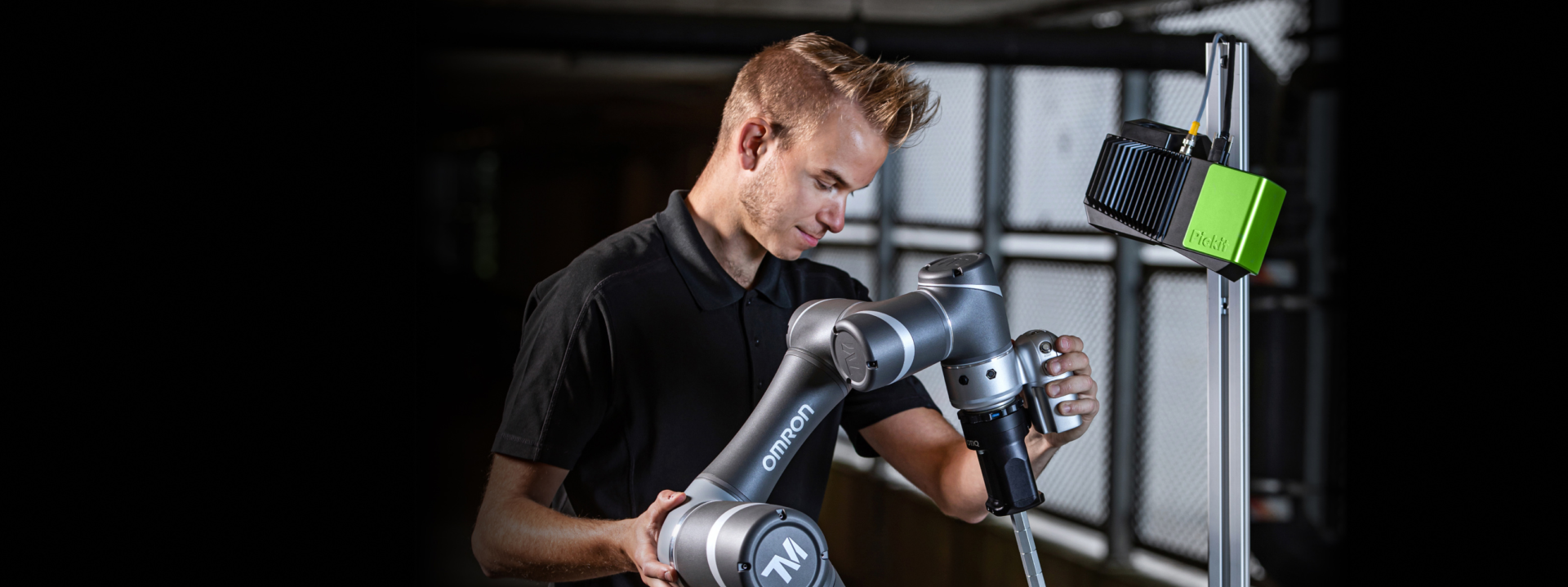Geberit injects flexibility into press fitting assembly with 3D robot vision
The Swiss company Geberit is a European leader in flushing, bathroom and piping systems for use in residential, commercial and industrial markets. As recently as 2020 it completely renewed its production and office facilities in Langenfeld, Germany. The Langenfeld plant, with around 500 employees, is one of the leading production sites for press fittings, or connectors for piping systems, made of stainless steel, carbon steel and copper. In July 2023, the last addition to this renewed production facility involved a state-of-the-art assembly line equipped with, for the first time ever, advanced 3D robot vision technology.
Addressing the challenges of an outpaced line
The 15,000 square meter production hall houses the automated production process of press fittings, involving the cutting, bending, washing, forming and joining of metals to the assembly of semi-finished and finished products. The new production facility eliminates the need to process the fittings at individual production stations which involved a lot of transport effort and a lot of manual work. In total, there are around 3000 different types of pieces.
In July 2023, Geberit replaced one of its existing lines to introduce an entirely new assembly line using 3D robot vision automation. There were several good reasons for this change. For one, the existing machine had served for fourteen years and could no longer guarantee the required high-level quality of assembly in time to come. Moreover, the outdated machine and technology using jigs lacked the desired efficiency and flexibility to address current and future needs. For example, it could only handle three diameters. Because of the slow changeovers between different parts – involving the use of over 80 different pins - the same batch had to be run for a long time in order to reduce downtime. And finally, the existing process involved the manual task of placing every pipe passing through the line on these pins, at a rapid pace.
“When facing the need to replace this outdated machine and process, we had to look for a very flexible and future-proof solution,“ says Markus Löffler, Project Manager for the Machinery Department at Geberit. “The new system had to be capable of handling parts of every diameter without straining manual tasks and not requiring complex or lengthy changeovers. Moreover, we had to look at the footprint of the new machine as well, as it had to fit into one specific area of the factory.”
Leveraging 3D Vision for flexible press fitting assembly
The Integrator designed and engineered the new assembly line, partnering with vision expert VRS to integrate the Pickit 3D robot vision solution. At the beginning of the line, press fitting parts are fed from a pallet cage to a conveyor belt, which in turn are guided to two smaller conveyor belts. At the end of these belts, two Pickit 3D robot vision systems each accurately scan randomly positioned parts and pick them from the belt. The picked objects are then placed into a rotation table, to be correctly rotated, laser marked, sleeved and finally plugged.
The 3D robot vision solution combines Pickit 3D's versatile and easy-to-use software platform, which can handle complex pick and place, assembly and robot guidance processes, with two fixed mounted Pickit 3D vision cameras, giving eyes and brains to the Kuka industrial robot.

Cost-effective, versatile and easy-to-use
Once fully implemented the new machine will flexibly handle up to 400 product variations based on around 180 different base parts. It allows Geberit to produce small batches, providing enormous flexibility to address rapidly changing needs. Moreover, being fully automated, the process does not require any laborious manual tasks.
“Instead of running batches for a week to avoid changeovers, we can now change a batch up to six times a day. A changeover takes less than 15 minutes and can be started even when the machine is still running the previous batch,” acknowledges Blandine Vialle, Production Process Engineer at Geberit
Flexibility and cost-effectiveness are underpinned by the Pickit 3D software platform’s ease of use. To make changes, Geberit does not need to rely on external parties to perform complex interventions. “A while ago, the robot needed to be replaced. We did the calibration ourselves and that went smoothly,” explains Blandine Vialle.
“For the 400 product variations, up to 180 programs are fed into the Pickit 3D solution. If we want to set up another station, we can just copy and paste these programs and start working,” adds Markus Löffler.
Looking ahead with new tests
Since its commissioning in 2023, the new machine using 3D robot vision currently runs according to expectations and will prove its benefits for the business adding considerable flexibility and efficiency to the assembly process. With the successful implementation of 3D robot vision in their press fitting assembly line, Geberit is currently running tests with other parts and products to validate the potential of this technology in other areas of the production site.
